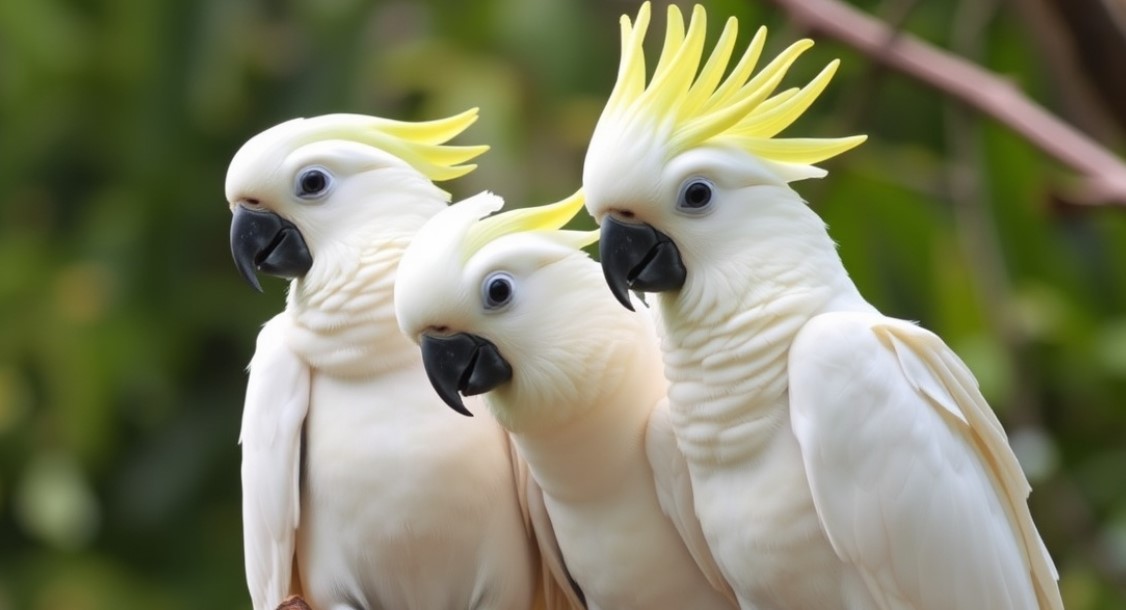Feature of a Cockatoos Head: Cockatoos are among the most captivating birds, known for their intelligence, playful nature, and striking appearance. One of their most distinctive attributes is their head, which possesses unique features that set them apart from other parrot species. In this blog, we will explore the key features of a cockatoo’s head, including their crest, beak, and eyes, while ensuring the content adheres to Google’s policies for quality and relevance.
1. The Crest – A Cockatoos Signature Feature
The most prominent feature of a cockatoos head is its crest, a collection of long, flexible feathers that can be raised or lowered at will. This crest serves various functions:
- Communication: Cockatoos use their crest to express emotions. A raised crest may indicate excitement or alertness, while a flattened crest can signal relaxation or caution.
- Mating Displays: During courtship, cockatoos fan out their crests to attract potential mates.
- Defense Mechanism: When feeling threatened, they may raise their crest as a warning to predators or rivals.
Each cockatoo species has a different crest appearance. For instance, the Sulphur-Crested Cockatoo has a bright yellow crest, whereas the Major Mitchell’s Cockatoo sports a stunning pink and white crest.
2. Powerful Beak – A Tool for Survival
Another defining characteristic of a cockatoo’s head is its strong, curved beak. This beak serves multiple purposes:
- Cracking Nuts and Seeds: Cockatoos primarily feed on hard nuts and seeds, using their robust beaks to break open tough shells.
- Climbing Aid: These birds often use their beaks to grip branches and assist in climbing.
- Communication and Play: Cockatoos use their beaks to interact with objects, manipulate toys, and even show affection to their owners.
Unlike some other parrots, cockatoos lack bright colors on their beaks, typically displaying shades of grey or black.
3. Sharp Eyes – Exceptional Vision
Cockatoos have keen eyesight, which plays a crucial role in their survival. Their round, expressive eyes allow them to:
- Detect Movement: Essential for spotting predators or locating food sources.
- Recognize Faces: Cockatoos can identify human caregivers and develop strong bonds with them.
- Adapt to Light Conditions: Their vision adjusts well to different lighting environments, making them skilled navigators in forests and open areas.
Eye color varies among species, with some having dark brown eyes, while others, like the Galah Cockatoo, may have red or pinkish hues.
Conclusion
The feature of a cockatoos head is not only aesthetically appealing but also serves essential functions for communication, survival, and interaction. From their expressive crests to their powerful beaks and sharp eyes, these traits make cockatoos one of the most remarkable birds in the avian world.
By understanding these unique characteristics, we can better appreciate and care for these intelligent creatures. Whether you’re a bird enthusiast, a pet owner, or simply curious about nature, learning about the anatomy of a cockatoo’s head provides valuable insights into their behavior and charm.
FAQs
1. Why do cockatoos raise their crests?
Cockatoos raise their crests to express emotions such as excitement, curiosity, or fear. It can also serve as a warning signal to others.
2. Do all cockatoos have crests?
Yes, all cockatoos have crests, though their size, color, and shape vary depending on the species.
3. How strong is a cockatoo’s beak?
A cockatoo’s beak is extremely strong, capable of cracking open hard nuts and seeds. It can also be used to grip branches and manipulate objects.
4. What is special about a cockatoo’s eyesight?
Cockatoos have excellent vision, allowing them to detect movement, recognize faces, and adapt to different lighting conditions.
5. Can cockatoos recognize their owners?
Yes, cockatoos are highly intelligent birds that can recognize and bond with their human caregivers.










